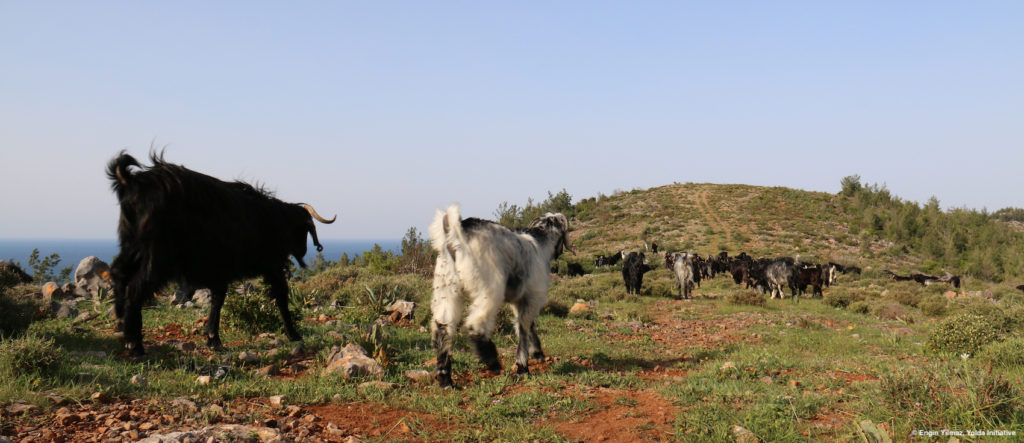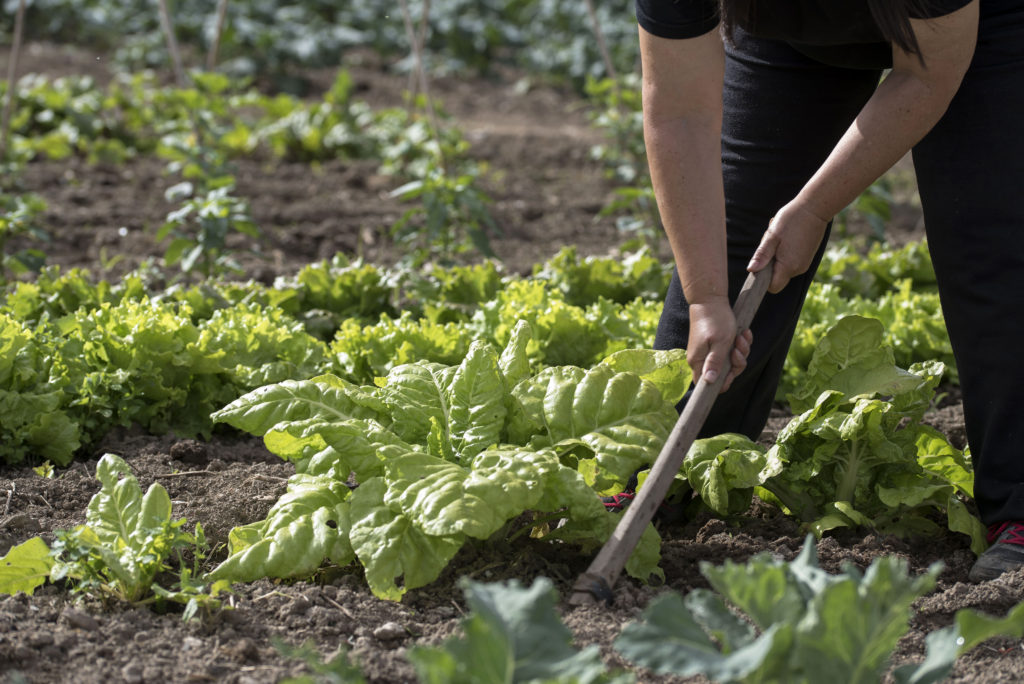Earth Overshoot Day 2022: lo squilibrio nel rapporto uomo-ambiente è ancora in aumento
Di Alessandro Galli e Marta Antonelli
Il 22 aprilendNel 1970 si è celebrata la prima edizione di quella che poi è diventata una data fondamentale per il movimento ambientalista mondiale: la Giornata della Terra. Il 1st L'edizione della Giornata della Terra è nata dal riconoscimento dei numerosi problemi ambientali dell'epoca e del loro impatto non solo sulla salute del pianeta, ma anche sulla salute umana. Pochi mesi dopo, nel dicembre 1971, si verificò un'altra pietra miliare, che questa volta fornì una misura quantitativa alla comprensione qualitativa dei problemi ambientali della Terra evidenziati dalla Giornata della Terra. Si trattava dell'Earth Overshoot Day.
Calcolato dal Global Footprint Network basandosi sui conti nazionali dell'impronta e della biocapacità (NFA) prodotti dalla Footprint Data Foundation (https://www.fodafo.org/) e della York University in Canada, l'Earth Overshoot Day segna ogni anno il giorno in cui l'umanità ha utilizzato tutte le risorse biologiche che la Terra rigenera durante l'intero anno. Negli ultimi cinque decenni, il metabolismo umano ha continuato a superare quello del pianeta a un ritmo sempre più veloce, tanto che attualmente l'umanità utilizza 74% in più di quanto gli ecosistemi del pianeta possano rigenerare, ovvero "1,75 Terre". In altre parole, il pianeta Terra ha bisogno di circa 20 mesi per rigenerare le risorse che l'uomo consuma e smaltire i rifiuti di anidride carbonica che l'uomo emette in soli 12 mesi. Dal giorno del superamento della Terra fino alla fine dell'anno, l'umanità opera in deficit ecologico. Questo deficit è attualmente il più grande da quando il mondo è entrato in overshoot ecologico all'inizio degli anni '70 e, negli ultimi 50 anni, i deficit annuali si sono accumulati in un debito ecologico di 19 anni di rigenerazione del pianeta. L'Earth Overshoot Day ci ricorda quindi che la persistenza dell'overshoot, ormai da oltre mezzo secolo, ha portato a un enorme declino della biodiversità, a un eccesso di gas serra nell'atmosfera e a un'accresciuta competizione per il cibo e l'energia. Le pressioni e i sintomi stanno diventando più evidenti con ondate di calore insolite, incendi boschivi, siccità e inondazioni, che portano all'insicurezza energetica e alimentare.
A fronte dell'ambizione globale di "non lasciare indietro nessuno", come stabilito dall'Agenda 2030 delle Nazioni Unite per lo Sviluppo Sostenibile, e di garantire a tutti una vita sana entro i limiti del nostro pianeta, la cruda realtà con cui ci confrontiamo quotidianamente è quella di società piuttosto diseguali - sia nella capacità di accedere alle risorse che di garantire il benessere - che operano oltre i limiti planetari.

Se tutti gli abitanti del pianeta avessero lo stesso stile di vita e di consumo di un cittadino europeo medio, l'Earth Overshoot Day cadrebbe il 2 maggio.nd, con date ancora più precoci in molti Paesi europei.

Perché è così? Che cosa possibilità abbiamo a disposizione per invertire questa situazione?
Prima di addentrarci nelle possibili soluzioni, vale la pena di comprendere meglio la questione in gioco. I beni e i servizi che sono alla base delle nostre società ed economie umane sono tutti sostenuti da ecosistemi funzionanti e sani. Raccogliendo risorse dal pianeta e rilasciando rifiuti, tutti noi contribuiamo ad avere un impatto sulla Terra. Questo impatto definisce la nostra Impronta ecologica e può essere misurato. Dal modo in cui mangiamo a quello in cui guidiamo. Dall'acquisto di beni e servizi al modo in cui riscaldiamo e raffreddiamo le nostre case, le nostre attività quotidiane contribuiscono all'impronta ecologica che imprimiamo agli ecosistemi del pianeta. Qual è il ruolo di ciascuna di queste attività quotidiane?
I risultati dell'Impronta ecologica si allineano a quelli di molti altri studi, indicando che i sistemi alimentari di tutto il mondo contribuiscono in modo significativo al cambiamento climatico, causando circa 34% di emissioni totali di gas a effetto serra (GHG) a livello globale, oltre alla deforestazione e alla perdita di biodiversità, all'inquinamento dell'acqua e dell'aria, al degrado del suolo e all'aumento del rischio di diffusione di agenti patogeni, solo per citarne alcuni: in breve, il cibo da solo occupa oggi 55% (cioè più della metà) della biocapacità della Terra. I sistemi alimentari utilizzano risorse ed emettono gas a effetto serra in ogni fase del loro ciclo di vita, dalla produzione delle fonti primarie, alla lavorazione e raffinazione degli alimenti, all'imballaggio, al trasporto, fino alla distribuzione all'ingrosso e al dettaglio del cibo che mangiamo e poi smaltiamo.
Le disfunzioni dei sistemi alimentari globali sono molteplici.
Le pratiche agricole sono diventate sempre più intensive per soddisfare le richieste di una popolazione in crescita che sta affrontando una transizione nutrizionale verso una dieta occidentale ad alta densità energetica, aumentando così notevolmente l'offerta alimentare globale. Circa la metà della superficie agricola globale è utilizzata per la pastorizia o l'agricoltura intensiva, con impatti ambientali dannosi che spesso non vengono presi in considerazione e che non influenzano le scelte sui metodi di produzione nella misura in cui dovrebbero. Inoltre, circa 75% del cibo disponibile a livello globale è generato da sole 12 piante e cinque specie animali.
La globalizzazione ha portato anche alla crescita di catene di approvvigionamento lunghe e frammentate, caratterizzate da un alto grado di complessità e da molti attori coinvolti nelle diverse fasi. Questo spesso fa sì che grandi quantità di cibo vadano perse o sprecate - un fenomeno che rappresenta un terzo del cibo prodotto a livello globale. I consumatori che sono sempre più scollegati dalla fonte del loro cibo può anche essere considerato un sottoprodotto delle filiere lunghe, in un contesto in cui, almeno nell'Unione Europea, i responsabili politici sostengono la necessità di filiere più corte che riconnettano i margini della filiera alimentare, a beneficio sia dei consumatori che dei produttori. La disuguaglianza economica si ripercuote anche sul sistema alimentare, con salari iniqui per i lavoratori nelle diverse fasi della filiera (dai produttori ai dettaglianti) e con i piccoli agricoltori che ricevono una percentuale relativamente bassa della ricchezza generata nel sistema alimentare.
La disparità di accesso a diete sane mette a rischio la sicurezza alimentare di molti Paesi e comunità. Una dieta sana e nutriente è più costosa di una dieta sufficiente dal punto di vista calorico. Circa 3 miliardi di persone nel mondo (40% della popolazione globale) non possono permettersi una dieta sana, mentre circa 2 miliardi di persone sono in sovrappeso o obese. Si stima che, a livello globale, i fattori di rischio legati alla dieta causino 11 milioni di morti all'anno, mentre l'impatto della malnutrizione costa all'economia mondiale 13,6 trilioni di US$ all'anno. Recentemente è stato dimostrato che l'aumento dell'aspettativa di vita per il passaggio dalla tipica dieta occidentale a quella più sana potrebbe tradursi in più di un decennio per i giovani adulti.
Poiché la pressione sul pianeta dovuta ai sistemi alimentari è in aumento, la misurazione degli impatti ambientali dovuti ai nostri attuali sistemi alimentari sta diventando una priorità per informare il processo decisionale e la politica alimentare: trasformare il modo in cui produciamo, ci procuriamo, distribuiamo, consumiamo e scartiamo il cibo è una soluzione pratica per ridurre l'impronta ecologica di qualsiasi paese.. Inoltre, il cibo ci collega ai sistemi ecologici e può insegnarci qualcosa sul mondo in cui viviamo. Se l'umanità ritardasse l'Earth Overshoot Day di 6 giorni ogni anno, riusciremmo a riportare l'impresa umana entro i limiti di un solo pianeta entro il 2050. Anche se ambizioso, questo cambiamento è a portata di mano, poiché 4 trasformazioni chiave nei nostri sistemi alimentari globali produrrebbero da sole una riduzione dell'impronta di oltre 4 anni:
- Dimezzare gli sprechi alimentari in tutto il mondo contribuirebbe a spostare di 13 giorni la data del Earth Overshoot Day.
- Sostituire il 50% del consumo globale di carne con alimenti a base vegetale contribuirebbe a spostare di 7 giorni la data del Earth Overshoot Day.
- Approvvigionamento di carne da allevamenti locali che preservano la biodiversità e i terreni forestali contribuirebbe a spostare la data dell'Earth Overshoot Day di altri 5 giorni, se questa soluzione venisse attuata in tutto il mondo.
- Approvvigionamento dell'80% dei nostri alimenti a livello localelasciando invariate le nostre preferenze alimentari, contribuirebbe infine a spostare la data dell'Earth Overshoot Day di poco meno di 2 giorni aggiuntivi.

In conclusione, riteniamo che il modo in cui mangiamo sia un'indicazione definitiva della sostenibilità dei nostri sistemi alimentari, nonché un agente fondamentale di cambiamento verso la sostenibilità. La "forchetta" è lo strumento di sostenibilità più utile che abbiamo come cittadini, poiché le decisioni alimentari che prendiamo oggi possono causare un effetto positivo a cascata lungo l'intera catena alimentare, con un impatto su ogni fase del percorso. Gli attuali sistemi alimentari globali sono dannosi per la salute interconnessa dell'uomo e del pianeta, ma diverse opportunità di benesserecome abbiamo dimostrato, sono a portata di mano.
Inoltre, gli alimenti noti per essere associati a un miglioramento della salute umana hanno un impatto ambientale tra i più bassi, mentre quelli ad alta intensità di risorse sono spesso associati ai maggiori aumenti del rischio di malattia. Il cambiamento dei nostri sistemi alimentari è quindi un modo per riconoscere e agire sulle proficue interdipendenze tra salute, ambiente ed economia. Garantire un sistema alimentare sostenibile ed equo che funzioni sia per i produttori che per i consumatori è lo scopo di Foodnected, un progetto finanziato dalla Fondazione MAVA.







